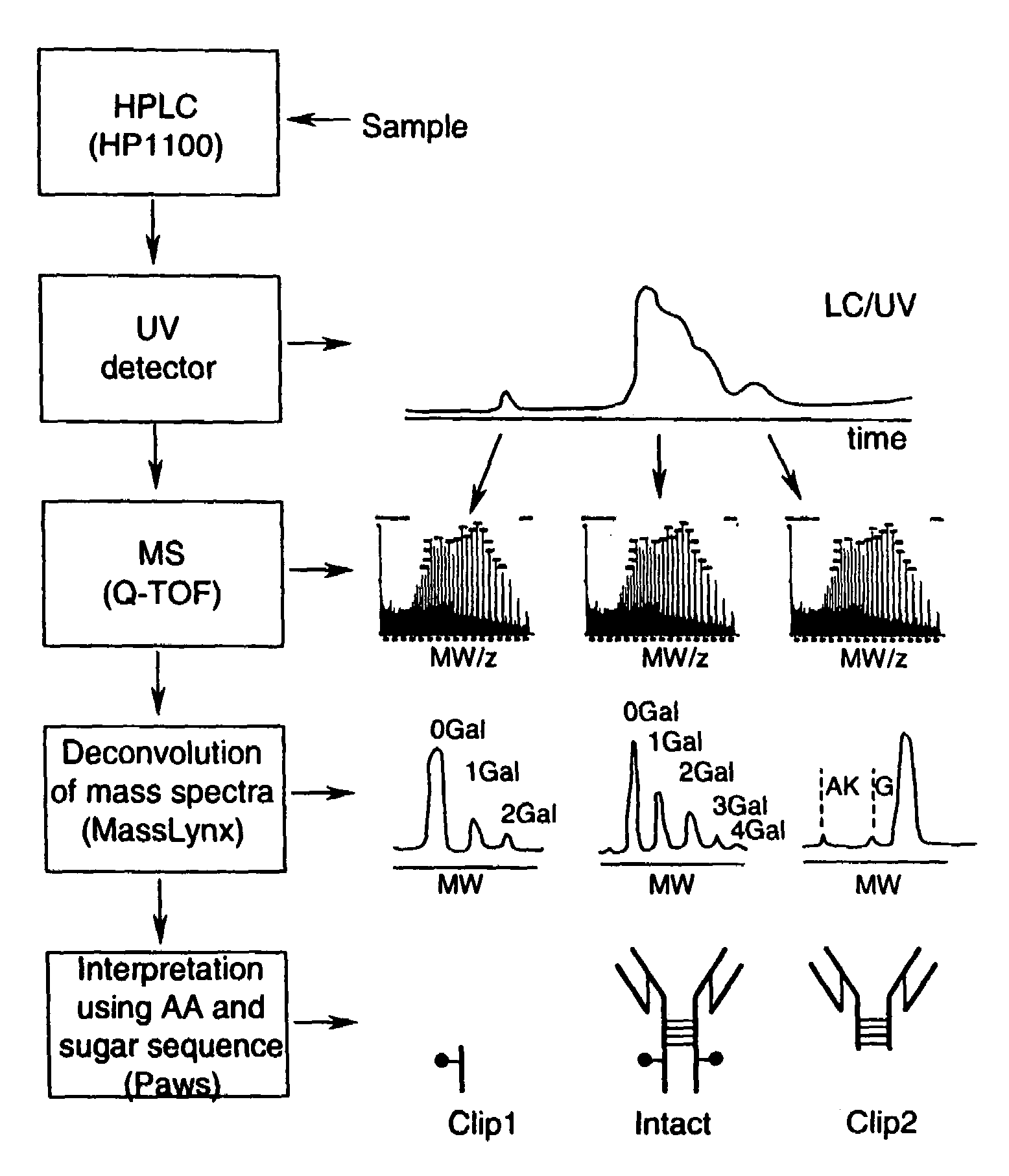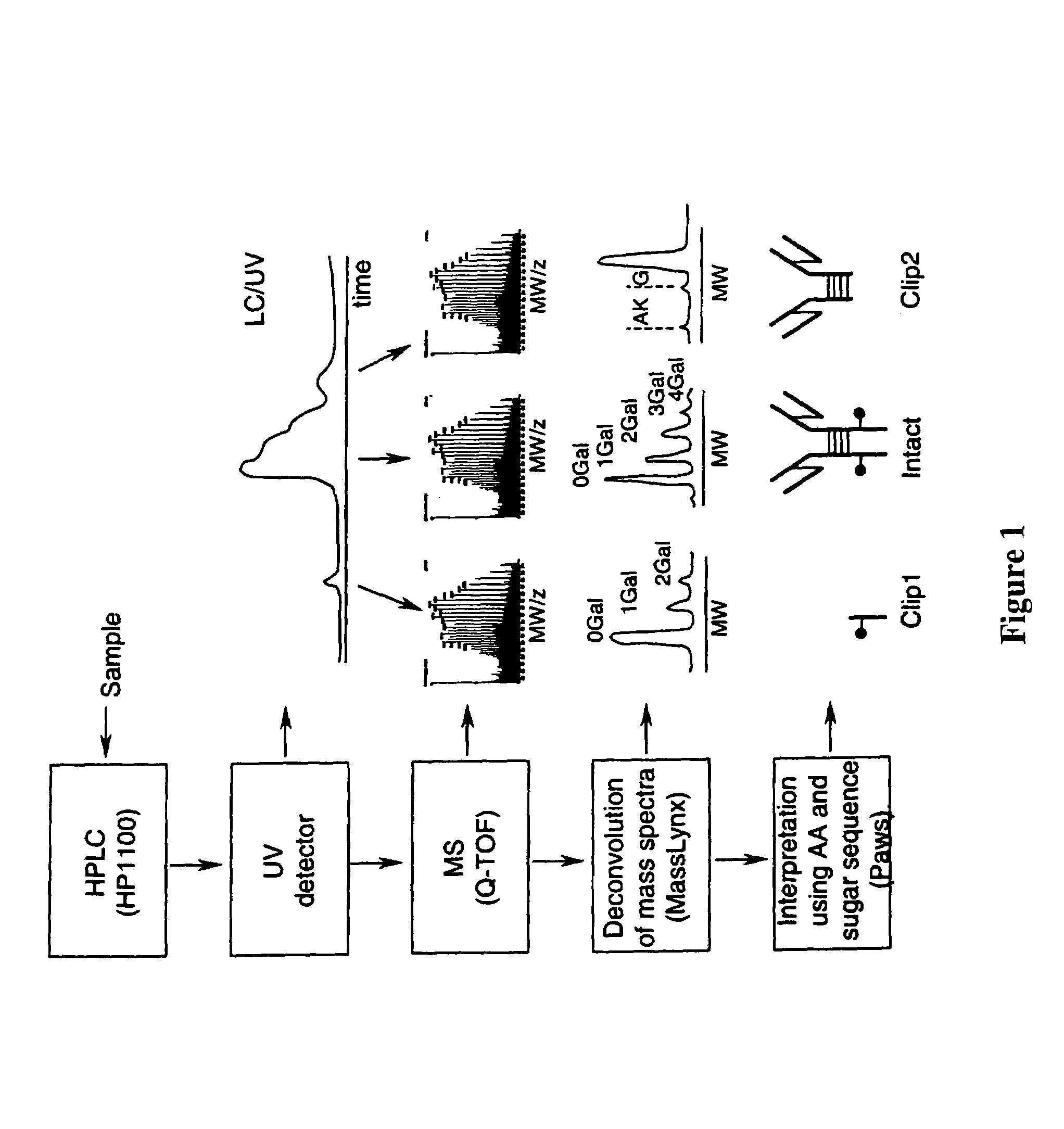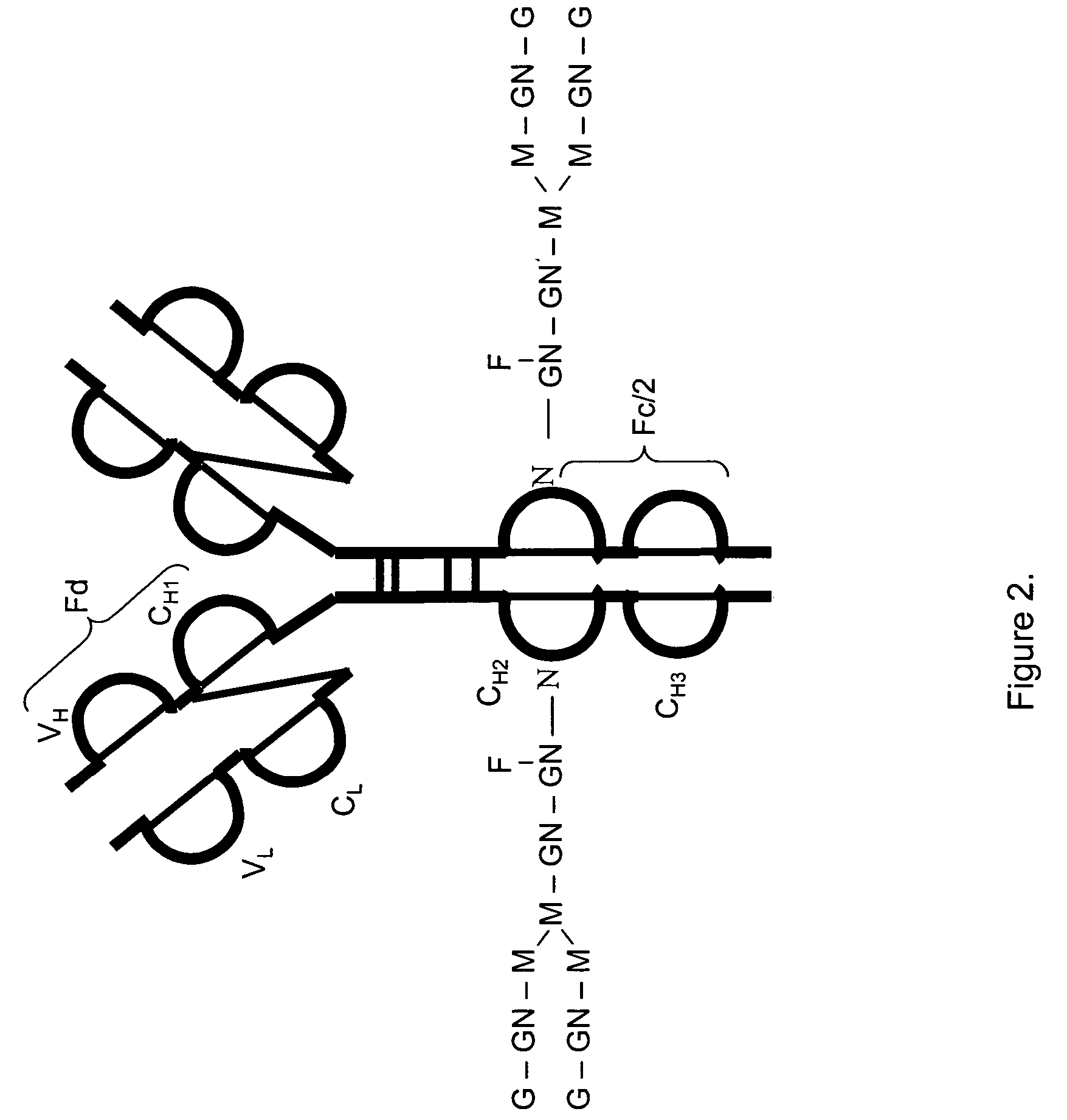LC/MS method of analyzing high molecular weight proteins
a high molecular weight protein and ms technology, applied in chemical/physical processes, peptides, particle separator tube details, etc., can solve the problems of ineffective application of mass spectrometry for the analysis of higher molecular weight proteins, limited application of high performance liquid chromatography (hplc) readily adaptable for the separation and analysis of low molecular weight species, and insufficiently achieving the applicability of mass spectrometry for the analysis of higher molecular
- Summary
- Abstract
- Description
- Claims
- Application Information
AI Technical Summary
Benefits of technology
Problems solved by technology
Method used
Image
Examples
example 1
Analysis of Glycosylation Profiles
[0117]FIG. 2 shows a structure of an IgG2 antibody with attached oligosaccharides. Table 3 presents a range of oligosaccharide structures possible for most antibodies, their molecular weight values and abbreviaton codes. FIG. 3 shows a UV chromatogram of the IgG2 antibody and the deconvoluted electrospray ionization mass spectrum of this antibody with the glycosylation profile. The mass spectrometric profile in FIG. 3B indicates that the most abundant glycosylation form of IgG2 is missing all galactose residues. FIG. 4 is a structure of IgG1 antibody. FIG. 5 shows UV chromatogram of the IgG1 and the deconvoluted electrospray ionization mass spectrum of this antibody with its glycosylation profile. The glycosylation profile of this antibody is more complicated than for IgG2 antibody, because the IgG1 has an additional N-glycosylation in the VH domain. These additional glycans also have biantennary structure bit with terminal sialic acid residues. In ...
example 2
Identification of Cleavage Sites
[0120]Polypeptide bond cleavage is one of the common degradation pathways in proteins, which may take place during manufacturing and delivery of pharmaceuticals such antibodies. It can be caused by metal ions or the presence of residual proteases after purification. Identification of the clipping sites remains an important task because it allows detection and removal of the cause of degradation. FIG. 6 shows the UV chromatogram of IgG2 antibody, which may be contaminated with a protease, after 8 weeks at 37° C. versus a control sample. Peaks 1 and 9 represent cleavage products of the IgG2. The mass spectrum for the main component of IgG2 eluting as peaks 5-7 is shown in FIG. 3. The main component (peaks 5-7) of both the degraded and control samples has the same MW value within the error margin. The masses for peak 1 and 9 cleavage products were identified from the mass spectra presented in FIGS. 7 and 8. Identified clipping sites are between residues ...
example 3
Identification of Dimers
[0122]Formation of dimers, aggregates, and associated fragments is another pathway of protein degradation especially in formulation solutions with high protein concentrations. A degraded sample of a second IgG1 antibody was separated by the reversed phase HPLC to separate a main peak and a dimer. The measured MW of the monomer was 149525 Da, as compared to theoretical calculated value of 149522 (+20 ppm). The measured MW of the dimer was 299090 Da, as compared to a theoretical calculated value of 299050 Da (130 ppm). See FIGS. 10 and 11 for more details. This example shows the utility of the method for quick identification of protein aggregates.
PUM
| Property | Measurement | Unit |
|---|---|---|
| temperature | aaaaa | aaaaa |
| molecular weight | aaaaa | aaaaa |
| molecular weight | aaaaa | aaaaa |
Abstract
Description
Claims
Application Information
 Login to View More
Login to View More - R&D
- Intellectual Property
- Life Sciences
- Materials
- Tech Scout
- Unparalleled Data Quality
- Higher Quality Content
- 60% Fewer Hallucinations
Browse by: Latest US Patents, China's latest patents, Technical Efficacy Thesaurus, Application Domain, Technology Topic, Popular Technical Reports.
© 2025 PatSnap. All rights reserved.Legal|Privacy policy|Modern Slavery Act Transparency Statement|Sitemap|About US| Contact US: help@patsnap.com



